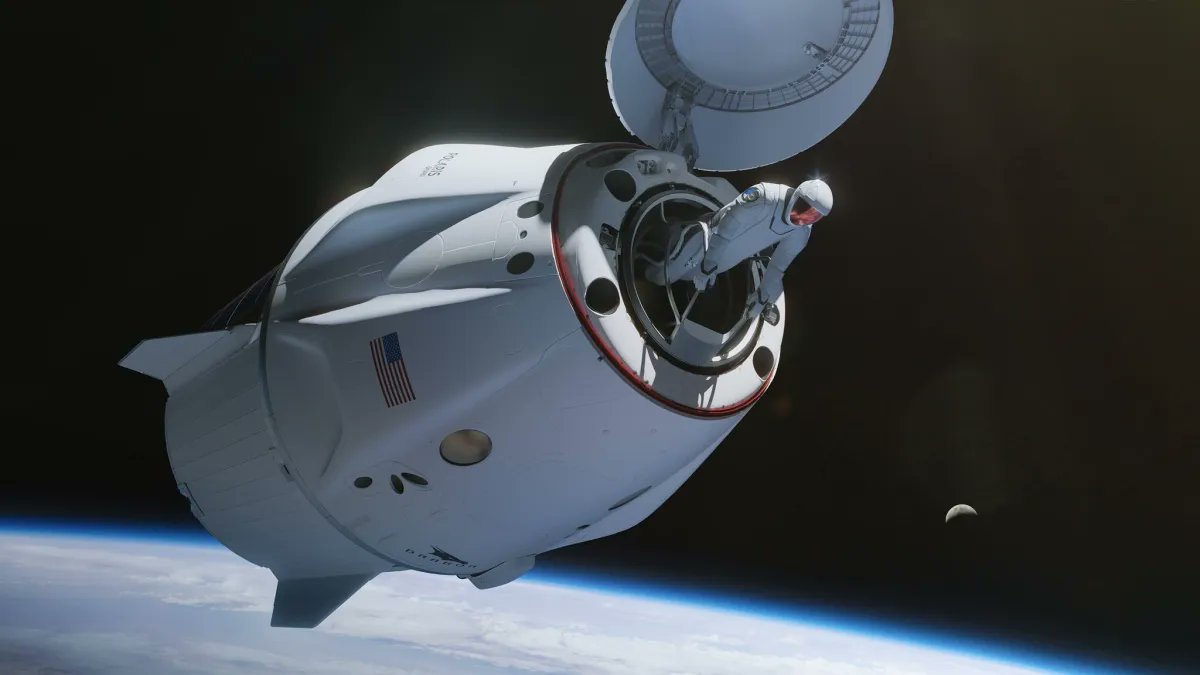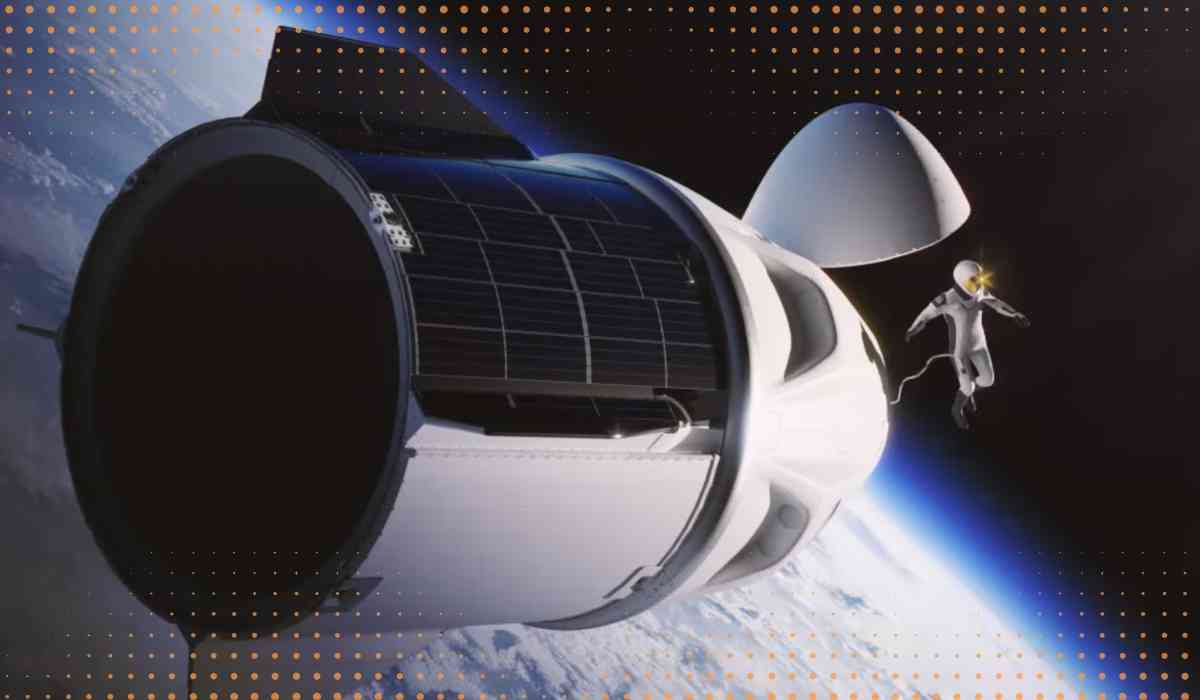-
Historic Milestone: SpaceX’s Polaris Dawn mission is set to conduct the first-ever privately managed spacewalk today, led by billionaire Jared Isaacman and SpaceX engineer Sarah Gillis.
-
Spacewalk Risks Remain High: Despite advancements in technology, spacewalks (EVAs) are still highly dangerous. Historical incidents such as Alexey Leonov's inflated suit, Luca Parmitano's near-drowning, and Chris Hadfield's temporary blindness demonstrate the persistent risks astronauts face during EVAs.
-
Mission Details: The spacewalk will occur approximately 700 kilometers above Earth, higher than the International Space Station's orbit. All four crew members will wear SpaceX's newly developed EVA suits since the Crew Dragon capsule lacks a dedicated airlock and will be fully depressurized during the spacewalk.
-
Advanced Preparations and Equipment: SpaceX has developed new spacesuits equipped with cameras, thermal management systems, and heads-up displays, ensuring the astronauts are well-prepared for this mission.
-
Expert Confidence: Experts, including former NASA astronaut Leroy Chiao and ex-SpaceX Dragon mission director Abhi Tripathi, express confidence in the mission's success, highlighting SpaceX’s stringent safety measures and meticulous planning.
-
Significance for Private Space Exploration: This mission marks a significant step forward for privately managed human space exploration and could pave the way for more ambitious commercial space missions in the future.

Image Source - X
Today, history will be rewritten as SpaceX's Polaris Dawn mission embarks on the first privately-led spacewalk. Of its four-person crew, two will be venturing outside the craft in spacesuits: billionaire mission leader Jared Isaacman and SpaceX engineer Sarah Gillis. While EVAs, more colloquially referred to as spacewalks, have become possible since the 1960s, the high risks involved with them remain a common threat.
Early Spacewalks: Revisiting History
The first-ever spacewalk was done by a Soviet cosmonaut named Alexey Leonov on March 18, 1965. Leonov tied himself to his spaceship and spent just 12 minutes outside during the Voskhod 2 mission from the Soviet Union, which resulted from the tight race between the Soviet Union and the United States over space. The flight was everything but without incident: his suit inflated within the vacuum of the space, and he could hardly make it back into the airlock. Leonov had to bleed off some of the pressure in his suit manually, a very dangerous operation.
A few months later, on June 3, 1965, American astronaut Ed White became the first U.S. spacewalker during the Gemini 4 mission. White spent 23 minutes outside his spacecraft, nearly doubling Leonov's record. White's spacewalk-lowered by an oxygen-jet gun which ran out of fuel almost straight away- became one of the most enduring images from the early years of space flight. He died tragically two years later in a fire during a test for the Apollo 1 mission.

Image Source - X
The Dangers of Spacewalks: Then and Now
Spacewalks are dangerous because they expose the astronauts to a hostile environment where even minor issues can become life-threatening. In 2013, Italian astronaut Luca Parmitano almost drowned when his helmet started to fill with water due to a leak in the ventilation system while he was doing a spacewalk. Unable to speak and disoriented, looking for his way to safety, he survived only because he kept calm and thought about solutions.
In 2001, Canadian astronaut Chris Hadfield reported a temporary blinding during his first EVA because an antifogging agent in his helmet had caused his eyes to tear up. He was instructed to bleed off some air from his suit. This eventually cleared the irritant from his eyes enough to continue the mission.
Even with today's technology and safety measures, the risk to those space explorers is extreme. Today's Polaris Dawn mission, for example, requires a spacewalk for which the Crew Dragon does not have an airlock compartment, meaning the air in the whole capsule has to be depressurized, placing all four crew members in a hazardous situation. All will have to wear new, innovative spacesuits manufactured by SpaceX, complete with cameras, thermal management systems, and even head-mounted displays.
What We Know About Today's Spacewalk
The Polaris Dawn mission launched from NASA's Kennedy Space Center in Florida earlier this week and is intended to push new boundaries as the first spacewalk at an altitude of approximately 700 kilometers above Earth, way above the typical orbit of the International Space Station at about 400 kilometers. The spacewalks will be conducted separately by Jared Isaacman and Sarah Gillis, each EVA lasting about two hours.
During that time, the other two crew members, Scott Poteet and Anna Menon, will remain in the spacecraft, but they also will be at risk due to the depressurization of the capsule. Both Isaacman and Gillis are highly trained and extensively prepared for this job. Isaacman has flown to space back in 2021 aboard another Crew Dragon; Gillis has trained NASA astronauts for their missions, including the International Space Station Dragon missions, and the 2021 Inspiration4 mission.

Image Source - X
Confidence Among Experts
Experts are pretty confident of the mission's success. According to Leroy Chiao, who is a former NASA astronaut and has consulted with SpaceX, the company does take safety very seriously. It knows that a disaster could directly affect the future of commercial spaceflight. On similar grounds, Abhi Tripathi, a former Dragon mission director at SpaceX, spoke highly of the capabilities of the SpaceX team. According to him, they are one of the most meticulous when it comes to attention to detail and safety.
It is a historic day in which the whole world is watching, so it is another milestone in the development of private space travel that might herald even bigger missions in the future.
Inputs by Agencies
Image Source: Multiple Agencies
Ⓒ Copyright 2024. All Rights Reserved Powered by Vygr Media.

























